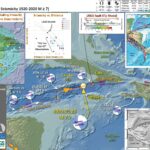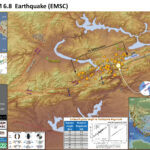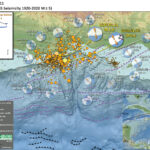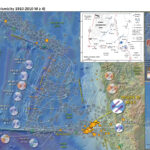Contrary to what some people spread around on the internets (some of them major earthquake experts), strike-slip earthquakes can and do generate tsunami (just like this one). More on this below. I am in Portland, Oregon this week, attending the…
Earthquake Report: East Anatolia fault zone
This M 6.7 earthquake was the result of slip probably along a left-lateral strike-slip fault associated with the East Anatolia fault zone (EAF). The event was shallow and produced strong ground shaking in the region. https://earthquake.usgs.gov/earthquakes/eventpage/us60007ewc/executive As I write this,…
Earthquake Report: Puerto Rico!
Welcome to the next decade of the 21st century. We may look back a decade to review the second most deadly earthquake in the 21st century, from the magnitude M 7.0 Haiti Earthquake on 12 Jan 2010. I put together…
Earthquake Report: Gorda plate
On 10 February 2010 there was an earthquake with a magnitude of M 6.5, within the Gorda plate. This event was feld widely in the region, as well as statewide. In Humboldt County, we even made t-shirts about this quake.…
Earthquake Report: 2010 Haiti M 7.0
This is the ten year commemoration of the 2010 magnitude 7 earthquake in Haiti that caused widespread damage and casualties, triggered thousands of landslides, caused tsunami, triggered a turbidity current, and caused thousands to be internally displaced. https://earthquake.usgs.gov/earthquakes/eventpage/usp000h60h/executive Here I…





